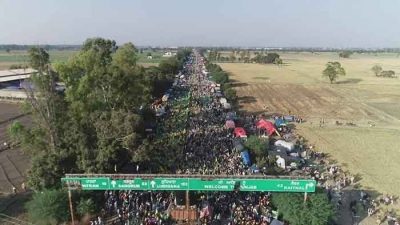What Lessons Can We Learn from Protests in India?

In the last one decade we are witnessed three major protests in different issues, but the outcome of each protest was the same. The protesters became popular but the issue lost in between the crowd of protesters. The issues are carved to harness more and more crowds irrespective of the issues. The three major protests at least indicate a pattern that we can learn a lesson from protests as well. I am using three major protests to decode the similar outcome.
The ongoing farmers’ protests is the third consecutive popular movement in the last one decade in the country. In the beginning of this decade, during 2011-12, India was witnessed a first media sponsored protests in the name of India Against Corruption (IAC), led by Anna Hazare and his team mates, nowadays everyone related to IAC was enjoying top echelon in the country-from Shri V K Singh to Shri Arvind Kejriwal to Mrs. Kiran Bedi and many more who won Parliamentary election in 2014 and Assembly election of Delhi in 2015 respectively. The protest was well carved and deliberated in their structures and constituents from the first stage of protest to the last stage of protest where you ride on power and become law makers as a part of protest. Later, the myth of IAC was busted that how the protest was politically motivated against, then Congress led UPA II govt. The IAC protest was a media driven protest, when media outlets both traditional media and social media provided extra coverage in the name of people’s issue-corruption. Does corruption end? Or, if it was a protest, then how did the leaders of protests ride into power? The same power they criticized but it was a matter of time, now, they are enjoying the same power. Nothing changed in the war against corruption except someone replaced the someone through a meta-narrative in the sense of IAC, that was carved against Congress led UPA II govt only and only.
The second moment arrived during CAA/NRC protest when suddenly Muslims started agitation and protested against the present BJP led Central NDA government that promulgated an amendment in the Citizenship laws in shape of Citizen Amendment Act, 2019. Which provides a chance to give citizenship to the people of minority communities except Muslims from neighbouring countries in South Asia. The protest started from Jamia Millia Islamia and spread across the cities in the country. With time the protest intensified and Shaheen Bagh’s protest became an epicentre during the protest. However, Shaheen Bagh’s protest was led by females in the majority. During the protest, Bhim Army leader Shri Chandrshekhar Azad emerged as youth icon, later he used the CAA/NRC protest as a major platform to launch himself as the Pan India leader of downtrodden or others. Moreover, the activist, Shahzad Ali, was among those who sat in the protest against the CAA-NRC combine in Shaheen Bagh and later he joined BJP. The octogenarian, Bilkis Dadi too emerged as one of the faces of resistance during the protest. There are many more who shined themselves during the protest in the name of CAA/NRC. However, the law is very much in their existence but protests rolled down by shadow of Corona, that caused lockdown in the country. In other words, corona became a savage to the politicians and government in various political interpretations. Few people use the protest to materialize the same for personal gain rather than helped to ease the causes that caused inconvenience to many.
The present farmer’s protest can be understood in such an extension that when along with farmers there are many so called political aspirants who want to exploit the protest to be visible across the media or in between crowds. In fact, such personalities neither have sanctity with the protesters nor have any background knowledge in the concerned protest. The case of Mr Yogendra Yadav who has started his political journey with Aam Adami Party (AAP) but he was expelled from the party on political and leadership issues. During the protest, it is difficult to draw a line as to who will lead the protest rather there are many faces that emerged due to the media or else when a face became face of such protest. For example, a protester was beaten by police became headline across the social media platforms and the matter took ugly turn when BJP IT Cell head’s Mr Amit Malviya’s tweet in response to Rahul Gandhi’s tweet in the issue was marked as “manipulated media” by twitter. There were many such instances reported across the social media platform when political aspirants took the protest for their own benefits rather than to enrich the peaceful protest to strengthen democracy.
The point taken is that during protest there are many who have political aspirations and when found the moment to jump in the protest then, therefore he/she exploits the protest for their own purposes. The protests are in fact producing politicians not leaders. However, being a politician, it is tough to suppress your own political aspirations through protests. These three protests made the protesters not the issues for which the protest was organized. We must keep this lesson for ever before joining any protest in the future that is your real intake.
*
Note to readers: please click the share buttons above or below. Forward this article to your email lists. Crosspost on your blog site, internet forums. etc.
Shekh Moinuddin authored four books Media Space and Gender Construction(2010), Mapping Media (2015), Mediascape and the State(2017) and The Political Twittersphere in India (2019). He has been teaching geography to UG, PG and MPhil/PhD students for the last ten years and successfully submitted six funded research projects. His research areas include media geography, social media, digital spatiality, cultural mappings, image-politics, digital shutdown, political economy of digital gadgets, digital loneliness, platform democracy, digital religiosity in India.
Featured image is from Countercurrents

